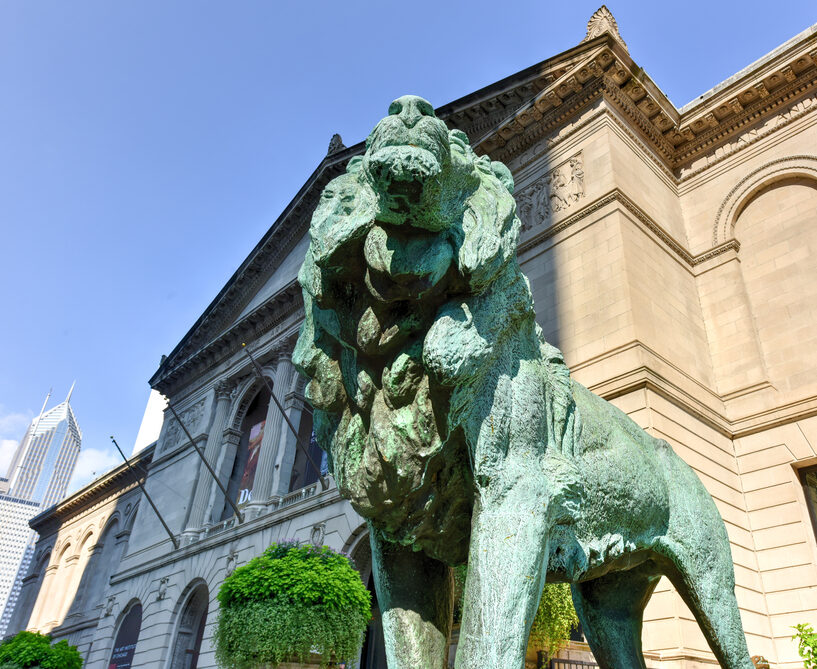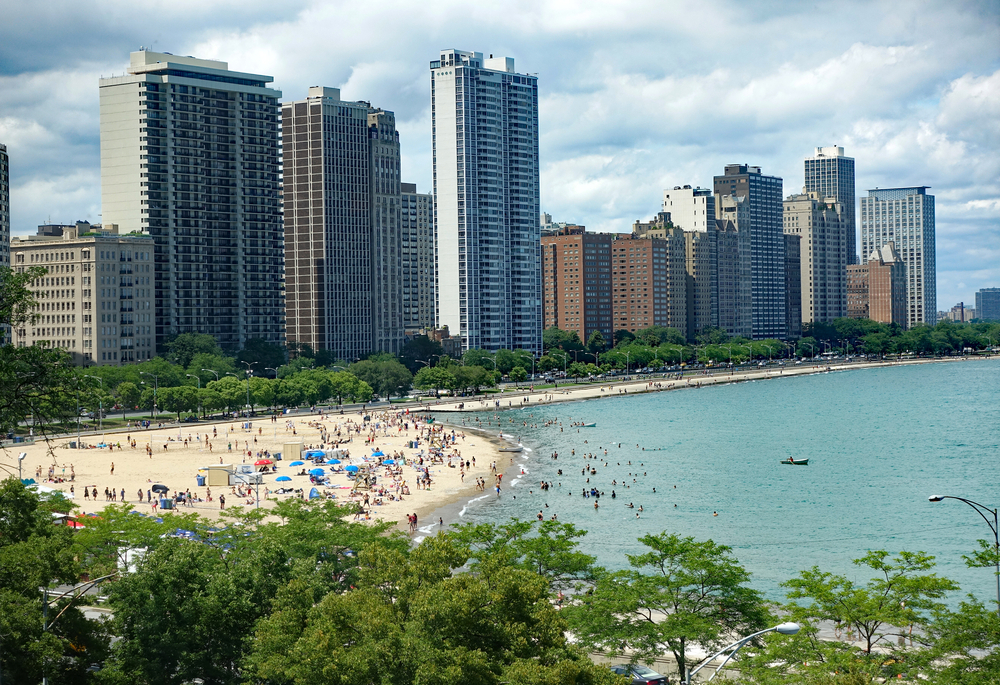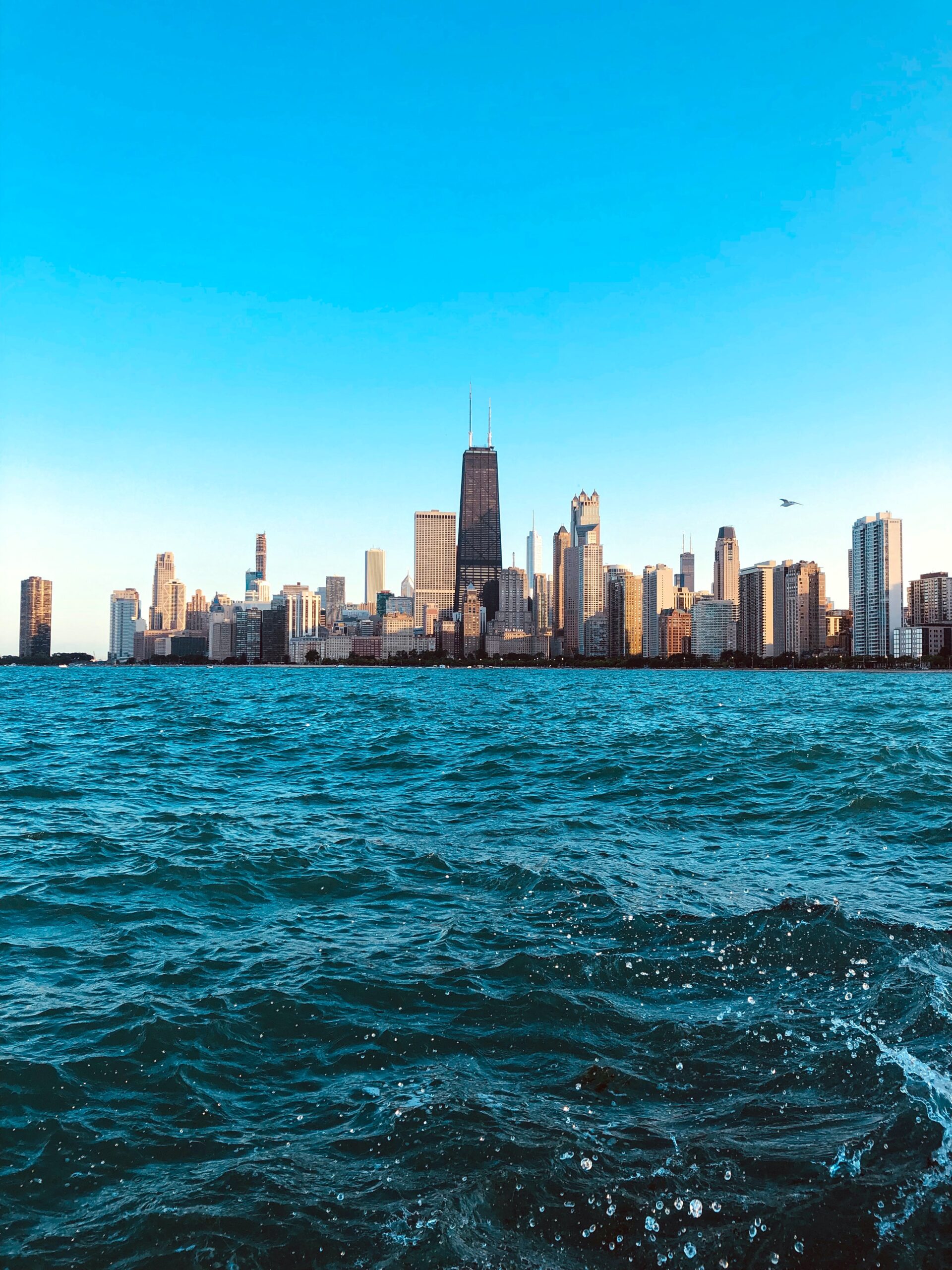
Moving to Chicago: Your Relocation Guide

If you’re thinking about moving to Chicago, you’re in for the relocation of a lifetime. As the country’s third-largest city, the “Third Coast” is teeming with nearly 3 million city dwellers, numerous neighborhoods nesting inside neighborhoods, and a cultural landscape that’s constantly rebuilding itself.
The sheer altitude of the city skyline viewed from Lake Michigan can make you dizzy. So, before you pack your bags, you’ll want to read up on what to expect from this Midwest city.
This relocation guide will cover everything you need to know to get your bearings before moving to the Windy City, including:
- A brief history of Chicago
- Geography and neighborhoods
- Climate and weather
- Population and demographics
- Cost of living and transportation
Wherever you ultimately land, you’ll find that Chicago is a masterpiece of civilization, with a flourishing urban landscape, innumerable opportunities and fun things to explore, and a storied history that’s still unfolding.
Let’s get started!
A brief history of Chicago
Founded in 1833, Chicago, Illinois, has Lake Michigan to thank for much of the city’s modern prosperity and vivid city life.
At the juncture of the Illinois and Michigan Canal, Chicago’s geographical location helped what began as a settlement of 200 people balloon into a fulcrum of trade and public transportation between the eastern and western sides of the country.
However, the catastrophic Great Chicago Fire obliterated four miles of the urban landscape in 1871. A major urban rebuilding project ensued that ushered in waves of new Chicagoans from around the country and the world.
Chicago is one of the railroad capitals of the country, funneling in people, industry, and prosperity from every part of the country. Chicago’s population reached its pinnacle in the 1950s when 3.6 million people resided in the city.
The Windy City is known for many things, such as the steel boom, the seedy (if not also glamorous) underbelly of Prohibition-era gangsters and speakeasies, the robust legacy of Black Chicago residents, and the divisiveness of the purported virtues of deep-dish pizza.
The richness of Chicago is embedded into every microcosm of the city, and while you may never get to know every nook and cranny of the city’s history, there’s an opportunity to explore something new no matter where you find yourself.
Geography and neighborhoods
Chicago has three main “sides,” or sections, of the city:
- The North Side
- The West Side
- The South Side
Each of these sides includes dozens of community areas and more than 200 neighborhoods. Many Chicagoans have shared an argument about how many neighborhoods there are, and where their boundaries lie, so it may be best to sit out this particular debate if you’re not a native.
Chicago has no East Side, but it does have Lake Michigan. The enormous waterfront is one of the most cherished geographic assets of the city, where residents can enjoy 29 lakefront beaches, piers, waterside restaurants, and aquatic activities like boating, jet skiing, and kayaking.
Chicago is also home to over 600 parks and green spaces, which can be found in virtually every part of the city. Some of the most famous are also sites of the city’s most beautiful attractions, museums, and cultural centers, including:
- Lincoln Park Conservatory (Lincoln Park)
- Peggy Notebaert Nature Museum (Lincoln Park)
- Museum of Science and Industry (Jackson Park)
- The Field Museum (Grant Park)
- Buckingham Fountain (Grant Park)
- DuSable Museum of African American History (Washington Park)
If you’re a dog owner, you’ll not only want to take advantage of these parks, but also the array of dog-friendly restaurants in Chicago!
Given the diversity and sheer size of the city, choosing the Chicago neighborhood you’ll return to every day is essential for making your expeditions sustainable.
If you’re researching moving to one of the best neighborhoods in Chicago, browse Landing’s network of flexible-lease apartments all across the Chicago Metropolitan area, or reach out to a team member to help you find an apartment that’s right up your alley.
Climate and weather
Chicago has a four-season climate, so expect to stuff your suitcase with swimwear, winter parkas, and everything in between before moving.
Chicago winter can be blisteringly cold—so cold that public schools in the area sometimes shutter for “cold days.” When blizzards blow through Chicago, they can be brutal (as in the case of the goliath Groundhog Day Blizzard of 2011), so bring weather-appropriate clothes, make friends with your neighbors, and make sure to purchase an XL snow shovel before the cold seasons kick into high gear.
However, the icier the winter, the more big-city life heats up when Chicago thaws come springtime. Chicago’s festival season lasts from May to October, and the Midwestern conviviality can be found around every corner, with almost every neighborhood celebrating their district with a block party or summer street fair. And, when summers get hot, sticky, or mired in a heatwave, Chicagoans can always flock to the Michigan lakefront for some sweet relief.
Population and demographics
Chicagoland is one of the most diverse cities in the country, with a booming job market.
Tides of immigrants from around the world have indelibly influenced the city’s architecture, cuisine, and culture, and the Great Migration at the turn of the 20th century was a watershed moment in its history. The legacy of Black Chicagoans, who comprise the third-largest African American population in the U.S., is inscribed into every part of the city—particularly in Chicago’s largest “side,” the South Side.
The majority of Chicagoans belong to the Christian faith, but many residents identify as Jewish, Muslim, Buddhist, Hindu, and areligious. Chicago is also home to the third-largest LGBTQIA+ community in the country, with 14% of residents identifying as queer.
Like the rest of the country, there is a sharp wealth disparity in Chicago—while the city ranked as the seventh city with extremely high net worth individuals, 22.1% of Chicagoans live below the poverty line. Across the city, the median household income is estimated to be $47,408.
Even so, the city maintains positive projections for Chicago’s economic growth rate. From May 2020 to May 2021, Chicago’s workforce expanded 7.3%, with the most growth occurring in the following industries:
- Leisure and hospitality
- Trade, transportation, and utilities
- Professional and business services
- Education and health services
True to the Midwestern spirit, Chicago welcomes newcomers with warmth and neighborliness. No matter who you are, you’re sure to find a home and a community after moving here!
Cost of living and transportation
Chicago can be a pricy town to live in, with a cost of living hovering at about 23% steeper than the national average.
The biggest expense in this city is housing costs, which are 56% higher than other areas of the U.S. The median rent is just shy of $1,700 per month, with single-family homes in the area costing approximately $540,000. Conversely, utilities are 10% more affordable than in other parts of the country.
While getting around the city can be 27% more costly than other areas, bear in mind that Chicago’s excellent urban planning has made it one of the country’s most traversable and accessible cities, and there are plenty of ways to get around town while you save, including:
- The L: The Chicago “L” is the Chicago Transport Authority’s (CTA) main rail system. The network comprises eight rapid transit lines, named by color, that make the major city ultra-accessible to commuters. “Ventra” cards—which can be used with the L or CTA buses—can be purchased as single passes ($2.50), day passes, or monthly passes for the best value ($105 for 30 days).
- Buses: Buses work to complement the L, making more of the city accessible with 129 bus routes operating along a grid. A Ventra Card will also grant you access to CTA buses.
- Biking: In 2016, Chicago earned the title of Best Bike City in America from Bicycling Magazine, with the country’s second-highest percentage of city-dwellers cycling to work every day. Biking can be one of the most affordable ways to get around the city, stay active, and get to know the city layout like the back of your hand.
- Pedway: If you’re a committed walker and plan on spending a lot of time in downtown Chicago, you need to check out the Pedway. Built for pedestrians, the Pedway is an underground latticework of tunnels, passages, and walkways spanning 40 hefty city blocks. Foot traffic in the Pedway is in the range of 10,000 people each day, and the system comes in particularly handy in rain or snow, when sidewalks can get slick.
Like New York residents, Chicagoeans have so many modes of transportation available that there’s no need for a car. If you’ll be commuting from a Chicago suburb, the city is also equipped with the Metra, which provides service to and from the city with 242 stations and 11 Metra lines starting at $4 a trip.
The diverse topography and physical breadth of Chicago and its surrounding suburbs can make the city a planet all its own—and with so many ways to move and vantage points to see from, even your humdrum daily commute can refresh your perspective on the city after moving here.
Moving to Chicago with Landing
If the idea of picking a stomping ground from one of Chicago’s 200+ neighborhoods is overwhelming, you don’t have to go it alone. Landing offers fully furnished apartments in the Chicago Metro area, all with flexible leases and no fees.
Wherever you’re from, and wherever you’re headed, our team is there 24/7 to help you find your perfect new lodgings so that you’ll be able to explore your new city with zero hassle or stress.









